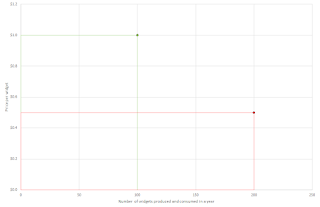In proper chronological order
to be written down at some point: on credit socialism; on moral deserts. 20251218_ On an alternative blockchain consensus architecture (1900 words, enforce network security through social consensus whilst retaining a decentralised architecture) 20251123_ On miscellaneous lesser ideas 20251106_ On a simpler cryptocurrency of dynamic supply (600 words, adopt a self-splitting token to mostly counter excessive appreciation or depreciation against the Dollar) 20251027_ [RETRACTED] On a small-change blockchain-less cryptocurrency 20251022_ [RETRACTED] On the simplest acceptable fiat monetary system 20250901_ On replacing the CEO (250 words, replace the CEO and C-suite with a triumvirate of Executives) 20250619_ On synthetic casuistry (800 words, limit judicial fiat and legal bloat by enforcing sentencing through linking to a few hundred synthetic cases only) 20250203_ [RETRACTED] On a blockchain of near immediate finality 20250122_ [RETRACTED] On an em...



